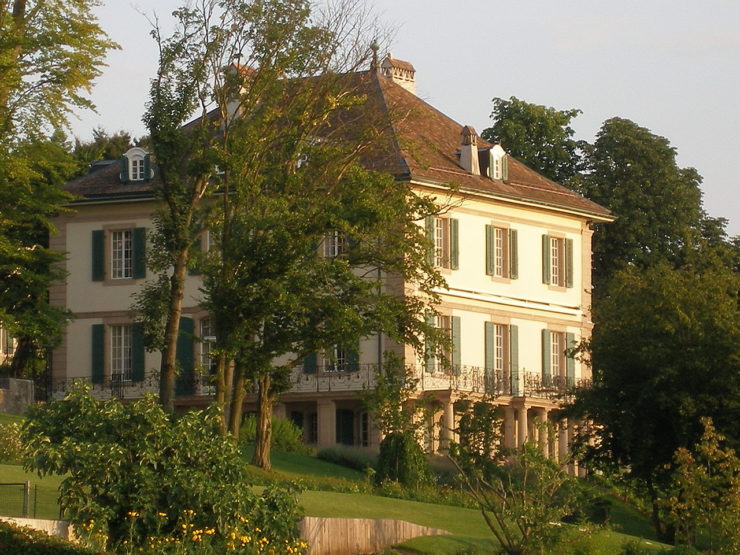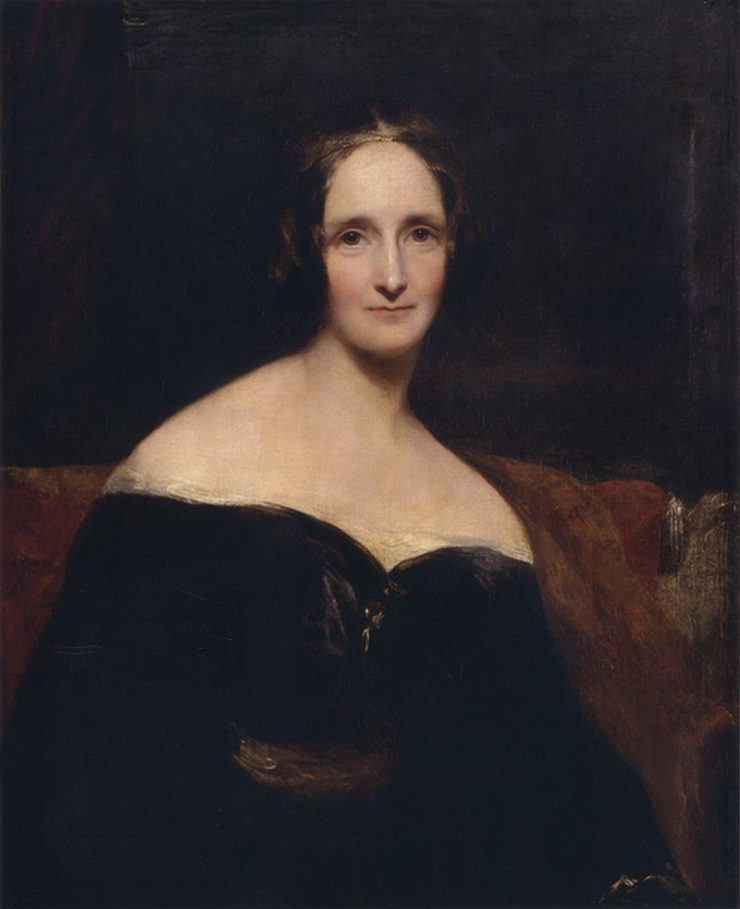I saw with shut eyes, but acute mental vision—I saw the pale student of unhallowed arts kneeling beside the thing he had put together. I saw the hideous phantasm of a man stretched out, and then, on the working of some powerful engine, show signs of life…
In the preface to the third edition of Frankenstein, Mary Wollstonecraft Shelley describes the waking dream that inspired her to write her famous novel, subtitled The Modern Prometheus. As we already know, Lord Byron proposed a ghost story contest with Percy Bysshe Shelley, Mary Shelley, and other guests on a trip to Lake Geneva in June 1816. The eruption of Mount Tambora in 1815 led to the subsequent year being called The Year Without a Summer, hence the dreary weather that kept Shelley and her friends inside as the conversation turned eerie.
Between 2 and 3 a.m. on the morning of June 16, 1816, Shelley tossed and turned in one of the villa’s dark rooms “with the moonlight struggling to get through” closed shutters, until the vision came to her. But diary entries from Lord Byron’s physician John Polidori led historians to believe that Shelley could have made up the timing. In 2011, Texas State astronomers were able to study the light of the moon almost two centuries prior to finally corroborate Shelley’s account. (This is an old news item from The Guardian, but worth resurrecting because it’s just. that. cool.)
Biographers claimed Shelley agonized over the writing challenge for a few days and didn’t put pen to paper until June 22, but Professor Donald Olson explained in Sky & Telescope‘s November 2011 issue that “our calculations show that can’t be right, because there wouldn’t be any moonlight.” Having already used astronomical tables and geographic reference points to clarify Caesar’s invasion of Britain in 55 BC and fact-check a freak high tide in Geoffrey Chaucer’s “The Franklin’s Tale” (from The Canterbury Tales), Olson knew his stuff. In 2010, he and two students recreated Shelley and co’s trip to Lake Geneva, exploring Villa Diodati and poring through weather records from 1816.

By June 22, the moon would have been a waning crescent, mostly blocked by the hillside, let alone have its light struggle through closed shutters. But six days prior, the gibbous (more than half-full) moon would have easily risen over the hillside and caught Shelley’s attention during what she called the “witching hour.”
With that discovery, Olson and his team guessed that Byron must have issued his challenge sometime between June 10 (when they all arrived at the villa) and 13. With Shelley restlessly hitting upon the story for Frankenstein between 2 and 3 AM on June 16.
“Mary Shelley wrote about moonlight shining through her window, and for 15 years I wondered if we could recreate that night,” Olson wrote in 2011. “We did recreate it. We see no reason to doubt her account.”
Science and fiction! Science fiction!










